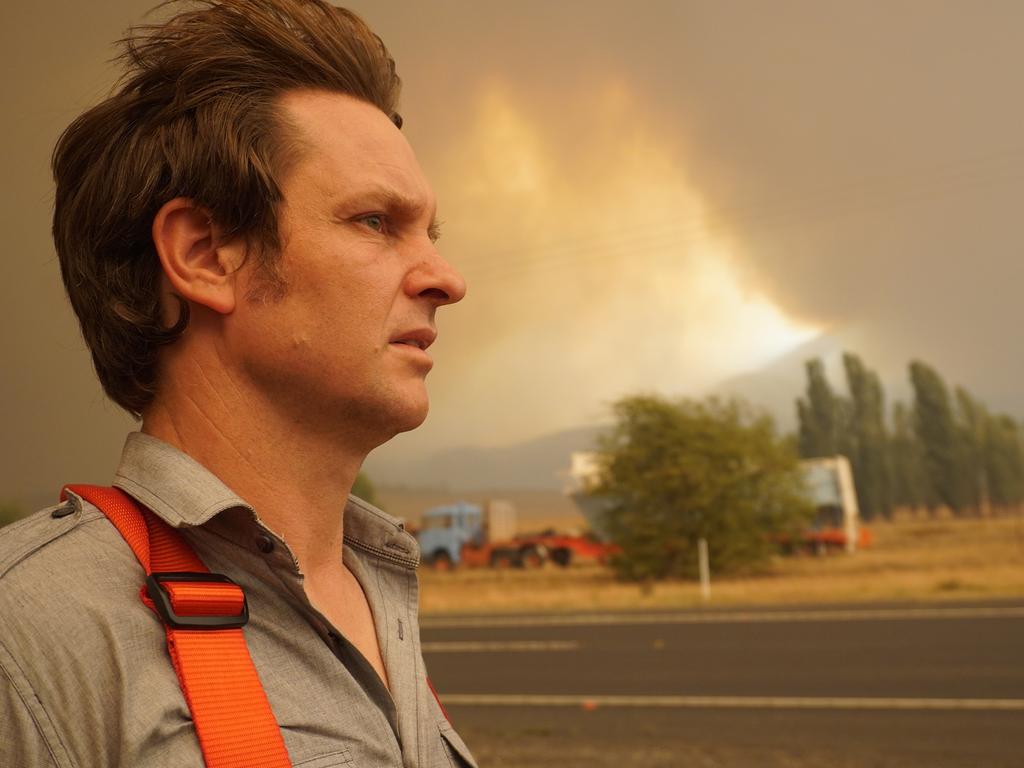Think life’s tough? Meet the families of the Aussie outback
Outback Ringer is a surprisingly immersive piece of entertaining TV, as ambitious folk wrestle feral bulls for dollar signs.

Outback Ringer is another of those highly cinematic testosterone-charged docusoaps that’s become such a staple of TV viewing, especially on cable and subscription services. But it’s a good fit for the ABC, too, which in the past year or so has been premiering a range of documentary formats as the budgets for expensive dramas have been steadily eroded.
And this half-hour series from Ronde Productions, another of those shows that is centred on rugged machines as much as the craggy characters who drive them, is a great example of the way modern reality TV uses exotic locations, beer mat budgets and agile, courageous crews to find drama where until recently few had thought to look.
Based on an original idea by Thomas Lawrence, who created the 10-part series with Ben Davies, who was also responsible for Ten’s long-running Bondi Rescue, now broadcast in more than 100 countries, Outback Ringer is directed by the intrepid Maria Handas. She’s a factual and reality entertainment veteran with more than 21 years working with small crews hunting snakes in the Amazon, raiding drug houses, filming riots and wrangling celebrities, which can be just as daunting.
If you’re puzzled about the title, a graphic fills us in at the start after a pre-titles montage of violent outback images set in the tropical north of Australia, involving helicopters, primordial-seeming animals, hurtling jeeps, and futuristic vehicles straight from Mad Max: Fury Road. They are driven by characters who look just as scary as George Miller’s desperados roaming his post-apocalyptic wasteland, as they hurtle trough the scrub in a landscape once described by writer Charmian Clift as “so strange, so profound, so unbearably potent with dreams”.
So, definition: “Ringer: Noun – Outback Australian slang for a person who works with livestock.” Well, this is a rather benign description of the professional feral bull and buffalo catchers working in the far north who feature in this visceral and entertaining show.
And in time, its simple, vibrant stories exploring grand themes about an exciting, dangerous slice of Australian life, and the characters who have achieved such a harmonious affinity with their environment, might just find a massive international audience too.
These ringers hunt the huge wild brindle beasts with those prehistoric-looking wide horns through the emaciated, dying tissue of forests beyond regeneration after the long recent drought in the Northern Territory. Perched in custom-built Toyota Land Cruisers, they swerve somehow between trees as they chase animals who have never seen humans before, branches smashing against the vehicles as termite mounds disintegrate in clouds of dust.
The series is a worthy addition to what’s become a generic trend for shows about hazardous occupations and heavyweight machines started by the creative Thom Beers. Revered as one of TV’s only true auteurs Beers, king of unscripted TV, developed not one but several distinct storytelling genres with shows like Deadliest Catch, Monster Garage, Ice Road Truckers, American Pickers and Storage Wars. All of them covered he says by the notion of “Testostereality”, and based on two simple guiding principles: story and characters.
Outback Ringer has both in spades, characters alive with a sense of passionate aspiration, determined to conquer this hostile country by the triumph of their will. And make their fortunes as they do. There’s big money in the estimated 300,000 feral bulls and buffalo roaming in the bush in lucrative overseas markets.
The first episode introduces husband and wife team ringer Liz and chopper pilot Willy Cook, as they begin their first muster of the season at Lorella Springs in the Northern Territory, one million acres of private property stretching all the way to the Gulf of Carpentaria. Contracted by the owners to catch the feral bulls, their goal is to pay down a $300,000 debt and maintain their marriage and life with their young kids, Charlie and Blake.
Then there’s young gun 31-year-old Lach McClymont, who we follow as he and his team of huge packed vehicles take the pitiless road to Nicholson in Northern Queensland, 19 hours’ drive from the nearest city. His dream is to own his own cattle station but with properties starting around $10m, he has a lot of dangerous catching ahead of him. As the road train struggles through the red dust, he has problems with the brakes on his truck. “I love the brutalism of this country,” he says cheerfully as he perches beneath the chassis with his box of tools. “Everything is a challenge, they just never end.”
The cattle they’re hunting were introduced into the Territory early in the 19th century in order to establish a pastoral industry. Most properties were largely unfenced, and with no restrictions on them spreading, many animals went wild. They happily marauded through the Top End. Virtually unstoppable, the herds grew to massive numbers, bring innumerable problems between the Kimberley and the Gulf, stymieing the productive management of pastoral properties. As a ringer says at the start, while narrator Mark Coles-Smith laconically fills in the backstory and narrative context, the animals “basically trashed the joint”.
Initially the bulls were shot from helicopters but quickly another option emerged as bull-catching crews began to muster them, selling them gainfully to the US market. The problem, according to another ringer early in the show, is “You’ve got to get them quick without being too hard on them.” The meat is valuable, the feral animals delivered live for export.
They were once captured by lassoing them from their trucks or were bowled over by ringers with their vehicle’s large “bull” bars before they were roped and tied. Now, guided by a helicopter pilot hovering overhead and driving at high speed, they use a bionic arm that might have been invented for a sci-fi movie, a mechanical device mounted on the heavily armoured cut down Land Cruisers that when operated makes them look like giant metallic insects. Fabricated from spring steel and shaped to surround the neck of the furious animal, the device grips the bucking, maddened creature against a flat steel side panel parallel to the “bull catcher”. Then the ringer guides it to a “catching position”, an open space where it can be loaded using the electric winch attached to the steel arm. Given their value, the animal’s welfare is of paramount concern.
It’s dangerous work as Lizzie finds out in the first episode, suddenly in big trouble with a disgruntled beast, and, despite the danger, never becoming unravelled, ripping her Toyota left and right as the bull attacks and attacks, Willy helpless as his chopper is motionless above the action. This is storytelling on a primal level all of a sudden, surprising and frightening. Liz is a woman of crackling toughness and authenticity and we feel the grit and the dust almost down to the individual particles in what is an exhausting, sprawling high speed combat.
Handas keeps it building and building, her small cameras working overtime, cutting and switching in an extraordinary symphony of motion. (Davies says they use many small Go-Pro cameras fixed on to the bull catchers, motorbikes and helicopters, which are also mounted on the characters at the centre of the action, along with a cameraman in the choppers, a crew on the ground and in one of the vehicles.)
The show is guided by a simple aesthetic, the kinaesthetic camerawork intercut with visceral intimate close-up coverage, and a fast-paced editing style — short sequences chopped together and alternating between a number of narrative strands through each episode with a number of major character arcs.
The stories followed here hark back to the hoary novels of writers like Ion Idriess, Frank Clune and Olaf Ruhen and their fictional tales of expeditions to find chimerical reefs of gold in Central Australia, the establishments of cattle stations, and death and adventure in remote deserts. And as was the case with these now largely forgotten writers, shows like this are still the product of a great thirst for stories which reflect the view of so many of us — mainly blokes, it must be said — as laconic, independent, resourceful inheritors of an outback culture.
The outback is a testing ground for character in this visceral drama, a kind of symbolic landscape where personal qualities and attitudes are challenged and tested in hostile environments and where situations of the most basic sort call on the deepest resources of courage and personality. Outback Ringer is a surprisingly immersive piece of entertaining TV.
Outback Ringer, Tuesday, ABC. 8pm.







To join the conversation, please log in. Don't have an account? Register
Join the conversation, you are commenting as Logout